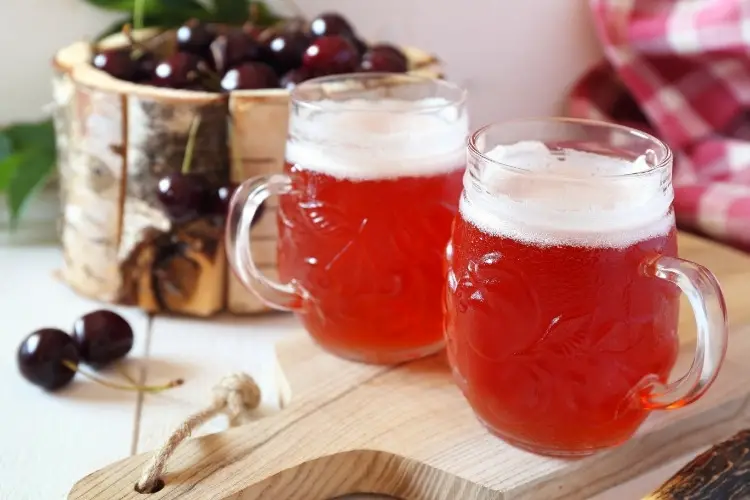Adding fruit to homebrewed beer is one of the best ways to add nuanced layers of flavor to an otherwise dull growler, and there are many kinds of fruit that are well-suited to be added into beer and pair well with several types of beer.
Fruit can be added to homebrew in many different forms and is often added close to the end of the fermentation process to decrease blow-off and loss of flavor. Many stone fruits, such as apricots and cherries, are popular additions to homebrewed beer as well as citrus peel and various kinds of berries.
While the process of adding fruit to beer isn’t complicated, there is a bit of science involved.
Keep reading to find out everything you need to know about adding fruit to your homebrew.
Choosing Fruit to Add to Your Homebrew
There are many different kinds of fruit that can be successfully added to various beer types to add a different layer of flavor and complexity to the brew.
Red fruits are especially popular because they are capable of adding color as well as flavor to the resulting beer.
The type of fruit used in a beer is dependent on both personal taste and the type of beer being brewed.
For example:
- Citrus flavors are a common element in wheat beers and lagers.
- Stone fruit such as cherries is often added to stouts and porters.
More recently, exotic fruits like passion fruit and monk fruit have been making an appearance in artisan beers, meaning the sky is the limit when it comes to experimenting with fruit in your homebrew.
While fruit experimentation is only now starting to hit the market in mainstream beer brands (and was driven in part by the boom in popularity of flavored hard seltzers), it has exploded in the homebrew community.
Here are some of the various fruits that can be successfully added to homebrewed beer:
- Raspberries: Raspberries are a popular addition to beer because they add a pleasing ruby color and can add a pronounced flavor even with small amounts of fruit added. Raspberries are a popular addition to Berliner Weisse and wheat style beers.
- Cherries: Cherries can be used in a variety of beer types, from adding tartness to ale to complementing cocoa nibs in a stout or porter. Like raspberries, a relatively small amount of fresh or pureed cherries can add a significant amount of color and flavor to homebrew. Typically, the darker the beer being brewed, the more cherries need to be used.
- Peaches: Fresh peaches are added most often to lambic beers and IPAs, and its sweet fruity flavor pairs well with the more aromatic and forthright spices used to season signature IPAs. Peaches are a favorite addition to pale ales as well.
- Blueberries: Like raspberries, blueberries have gained popularity as an element in wheat beers, and they can be added to a beer without drastically influencing its color, especially if the skins are removed before mashing (unlike cherries or raspberries, which dye beer red). Frozen blueberries are the best choice for adding to homebrew since they are picked at the peak of ripeness, while fresh blueberries at the grocery store are often underripe.
- Citrus peel (grapefruit, lemon, orange, and lime): Citrus peel can either be added alone, in addition to another fruit, or in addition to spices such as cloves and allspice. It is essential when adding citrus peel to homebrew that only the zest is used and not the pith of the peel, which can add a bitter note to the resulting beer.
- Cranberries: Because cranberries have a tart, almost sharp and sour flavor, they are best used in conjunction with other sweeter fruits such as apples or sweet cherries. Cranberries are a complementary addition to sour beer types.
- Apricots: Apricots—especially dried apricots—are a popular way to add sour, fruit-forward notes to many kinds of beer. Apricots have a more nuanced flavor than peaches (which can be cloyingly sweet in comparison), and they pair well with aromatic herbs and spices.
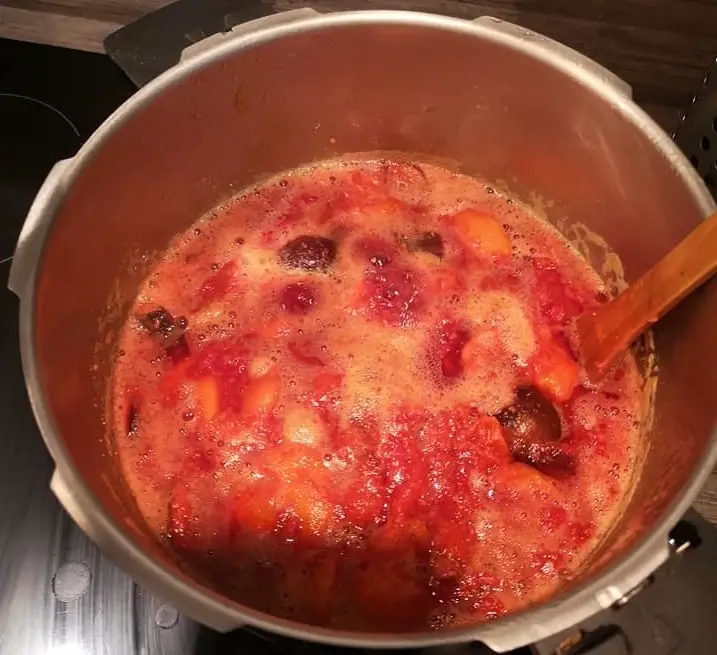
The types of fruit that do well in brewing beer are fruits that have high levels of sugar while also having relatively low levels of moisture.
While many craft brewers prefer fresh produce, frozen fruit is also a good option for adding fruit to beer.
It is possible to add multiple types of fruit to beer, but this needs to be done carefully to avoid muddling the flavors.
Using flavors that naturally go together in other aspects of culinary design (such as chocolate and berries or spices and stone fruits) can also help you experiment and create fruit-forward beers that are palatable.
It might seem like a paradox, but since frozen fruit is flash-frozen at the peak of ripeness or even a little overripe, this means it has more flavors and sugars available for the brewing process than grocery store produce.
Fruit can be added to homebrew in many different forms; dried fruits and fruit concentrates will provide more flavor in a smaller amount than more diluted forms of fruit such as fruit juice or fresh fruit.
Brewers should also take into account that these forms of fruit will add more sugar, too.
How to Add Fruit to Homebrew
Fruit can be added to homebrewed beer in many forms.
Here are some of the different ways you can add it in:
- Whole mashed fresh fruit
- Canned fruit
- Frozen fruit
- Fruit concentrates and purees
- Fruit extracts
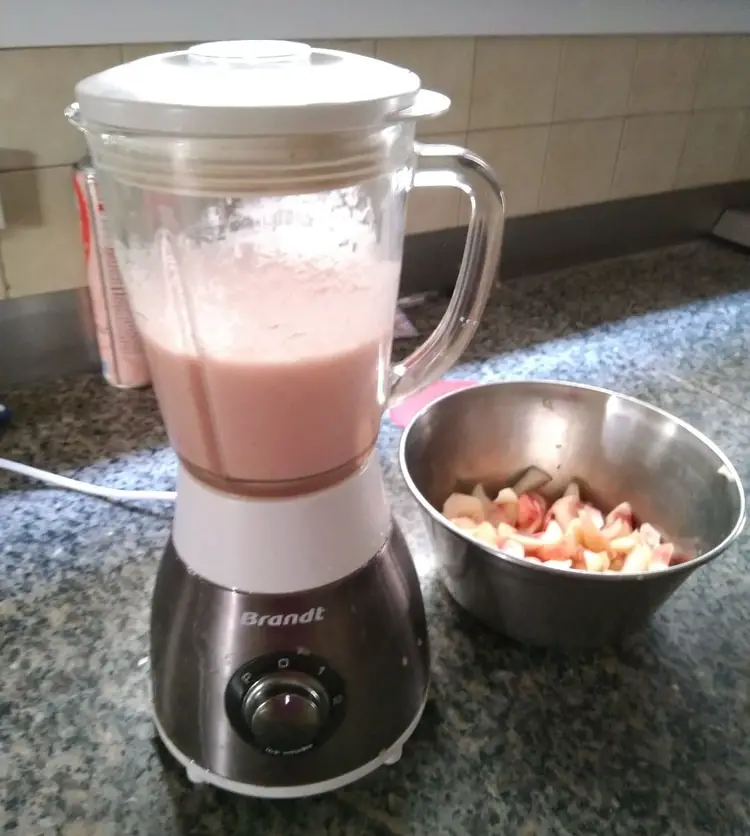
Each of the different forms of fruit used in homebrewing offers different advantages and disadvantages.
- Fresh fruit provides a fresh flavor but also introduces the threat of foreign bacteria and other introduced nastiness that can add off-putting flavors to your beer during the fermentation process.
- For those brewers who are concerned with using unpasteurized fruit and don’t want to go through the trouble to purify their own, canned fruit purees can be used in homebrewing as an addition to the fermentation process. However, the process of canning fruit cooks the fruit, and this, in turn, can leave the beer with a less authentic and more “cooked” flavor than using fresh produce.
- Fruit concentrates and purees can be an excellent way to add a lot of fruit flavor in a small package, but they can also add a lot of extra sugar that may throw off the balance of flavors in your final brew, leaving you with a beer that tastes cloying and overly sweet.
How Much Fruit to Add to Your Homebrew
There is no clear-cut answer to the question, “How much fruit should I add to my homebrew?”
If you asked a dozen different artisan brewers, you’d end up with a dozen different answers.
Adding fruit to beer comes down to experimentation, but in the end, the amount of fruit you use will depend on three major factors:
- The form of fruit being added
- What type of beer the fruit is being added to
- What type of fruit is being added
Fruits that are in a concentrated form, such as purees and dried fruits, can be added in smaller amounts because their flavor and sugars are concentrated, too.
On the flip side of that, you’ll need larger amounts of fresh fruit to achieve the same flavors.
The amount of fruit added is also determined by the type of beer you’re making.
Darker beers like porters and stouts require more significant amounts of fruit for the fruit to be perceived alongside the malty flavors of the dark beer, while pale ales and lagers require less fruit for the flavor to be perceived.
Some fruits, such as cherries and raspberries, can be added to beer batches in much smaller quantities and still lend plenty of color and flavor to a brew—other types of fruit must be added in larger amounts to achieve the same depth.
A good rule of thumb to start your experimentation is that for more robust flavored fruits, half a pound of fruit per gallon of brewed beer is a good baseline, to begin with, while a pound and a half to two pounds of fruit is better for lighter-flavored fruits such as stone fruits and citrus.
When to Add Fruit to Your Homebrew
There are two major process points where fruit can be added to a beer—during the end of the wort, after the wort has ceased to boil but is still hot, or during the secondary fermentation process.
Either way, you’ll want to add fruit to as close to the end of the brewing process as possible.
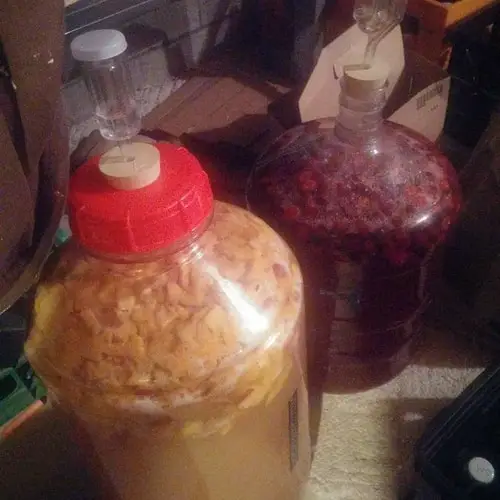
There are a couple of reasons for this:
- The first is that boiling temperatures draw pectin out of the fruit, which can affect both clarity and flavor of the resulting beer.
- The second is that boiling fruit in the beer boils off several of the flavors and aroma that you’re trying to add in the first place.
It is popular to add any fresh fruit to the secondary fermenter when homebrewing because this is a point where the beer should theoretically already have some alcohol built up in it, which serves to deter any bacteria from the fresh fruit from spoiling in the beer during the final fermentation process.
If the fruit is added to the wort, it should be added to the wort and left to steep for twenty minutes at 160-170° F (71-76° C).
This will allow the flavors of the fruit to seep into the beer while avoiding the threat of pectin and losing flavor through boil-off.
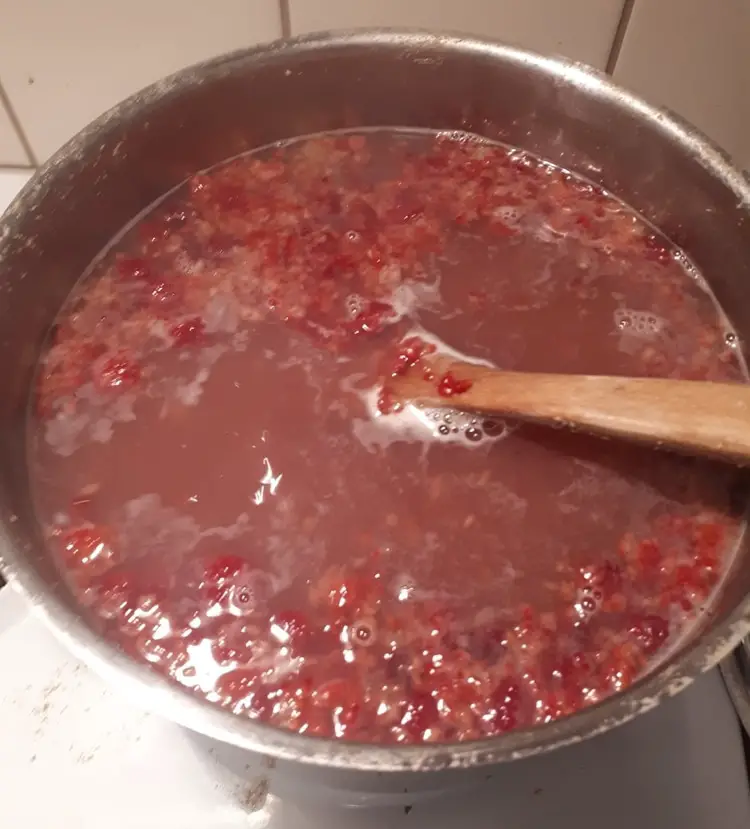
Pasteurizing Fruit for Beer
If you want to use fresh fruit for beer, it is a fantastic idea to pasteurize the fruit first.
Pasteurization is the process of sanitizing the fruit so that no latent bacteria present on the fruit’s surface are left on the fruit when it is added to the homebrew.
If non-sanitized fruit is added to the homebrew, off-flavors can develop as the result of “wild” yeasts and bacteria.
Before sterilizing, the fruit you’re going to add to your homebrew should be chopped, mashed, or blended up—this can be done with either a potato masher or with the pulse function on a blender.
The reasons for this are twofold: mashed fruit releases its sugars and flavors more effectively in the brew, and the mashed fruit provides more surface area for the beer to come into contact with, increasing the flavor imparted by the fruit.
Here are two simple methods you can use for pasteurizing your fruit:
- Heating method: Using a double boiler with a hot water bath, heat mashed fruit to around 160-170° F (71-76° C), being careful to measure the temperature of the fruit with a cooking thermometer. Heating the fruit for 15-20 minutes should remove almost all unwanted bacteria from the fruit.
- Freezing method: After mashing fruit, freeze the fruit mixture and thaw again to ensure that bacteria have been killed off. Some brewers claim that freezing and thawing the fruit a few types can help increase the fruit flavors released by breaking down cellular walls in the fruit.
As long as either of these methods is undertaken, there should be little to no chance of bacteria spoiling your batch of beer.
Of course, you can always choose not to pasteurize your fruit before adding it to your beer, but this is a risky prospect when brewing and may potentially end up leaving you with an undrinkable batch in the end.
If you don’t want to boil or freeze the fruit you’re adding yourself, choosing commercially packaged purees and frozen fruits is often a better option than going unpasteurized.
Does Canned Fruit Taste Different Than Fresh Fruit in Beer?
Canned fruit does taste different in beer than fresh fruit sometimes.
While canned fruit can be used in homebrewing, a canned fruit puree that has not had preservatives added to it must be used.
100% fruit should be used when adding to beer whenever possible.
Not only do preservatives add chemical or off-putting flavors to beer during the fermentation process, but they also prevent the canned fruit from fermenting effectively.
Organic canned fruit juices, concentrates, and purees that are listed as having no preservatives are the only canned fruits that are suitable for homebrewing without causing complications.
If you want to avoid the changed flavor of cooked or fermented fruit in your beer, a better option is to go with frozen fruit.
Frozen fruit is both riper than fresh fruit, and the flash-freezing process naturally pasteurizes the fruit, leaving it in perfect shape for adding to your homebrew right from the store.
Can You Add Too Much Fruit to Your Beer?
Like anything else, fruit in beer can be a case of too much of a good thing.
Fruit doesn’t just affect the flavor of the beer; it also affects the chemical composition and balance of it.
A beer that has too much fruit in it might not just taste bad; it may not turn out at all if there is too much sugar present.
This will result in a beer that has a sickly-sweet spoiled wine flavor.
When learning how to add fruit to beer, it’s a good idea to start with the smallest amount of fruit recommended and then work your way up to more significant amounts as you experiment and find out how much flavor is imparted by different amounts of fruit added.
If your beer turns out with a lighter fruit flavor than anticipated, larger amounts of fruit can always be added to the same recipe for a repeat batch.
Besides that fact, many people appreciate a more subtle fruit flavor or aroma in their beer, rather than the fruit overpowering the smell and flavor of the beer itself.
Some beer advocates may claim that any fruit is too much fruit in a beer, but artisan brewers have learned over the past few decades just how much fruit has to offer the flavor profile of many beers.
Once you’ve experimented with several different batches of fruit-forward beer, you’ll have a better feel for how much fruit is too much fruit to add.
What Types of Homebrew Beer Taste Good with Fruit Flavors?
Deciding to add fruit flavors to your homebrew can lead you to try out many new and exciting flavors of beer.
Here are a few of the different beer types that you can homebrew that prominently feature fruit in their flavor profile:
- Raspberry porter
- Belgian reds
- Sour ales
- IPAs
- Flemish red ales
- Berliner Weisse
- Fruit Gose
- Fruit lambic
- Blonde ales
Berry flavors tend to combine well with red and sour ales, while stone fruit and citrus are popular additions to white beers and IPAs.
Since brewers have just recently begun to experiment with exotic combinations of fruits in beer brewing, the fruit beers you can come up with are practically limitless.
For inspiration, check out some of the signature fruit beers that are being concocted by leading artisan brewers across the country, such as these twenty best fruit beers from Food and Wine.
Getting an idea of what microbreweries are doing can give you some great ideas for your next homebrew batch.
As for which fruit beers you try first, that is up to personal preference.
No fruit beer is more difficult to brew than any other, so if you prefer a good raspberry porter to a cherry stout, go nuts.
Any kind of fruit can theoretically be added to beer, so test out some exotic combinations and see what sticks.
Tips for Adding Fruit to Beer
When adding fruit to a homebrew beer batch, there are a few tips you should keep in mind to ensure that you get the best results from your brew.
Here are some hints that can help you avert disaster when adding fruit to your beer:
- Sanitize everything. All your brewing equipment should be pristine and clean every time you use it, as foreign bacteria is one of the number one causes of a spoiled batch of beer. As with canning, all bottles and handling equipment should be kept sterile to prevent contamination of the batch.
- Keep fruit cool to prevent fermentation. When you add fruit to your homebrew after the wort has boiled, reduce the heat and keep it low to prevent the sugars in the fruit from fermenting, as this will give the beer a much different flavor than fresh fruit.
- Try extracts at bottling time for more robust flavors. If adding fruit in its whole form isn’t adding a dominant enough flavor to your beer, try adding natural fruit extracts to the beer at bottling time instead. This can give the beer a more fruit-dominant flavor. Be careful to use authentic extracts rather than artificial ones for good flavor.
- Add citrus peels right at the end of the boiling process. An ounce or two of citrus zest (no pith) added right at the end of the boiling process can add extra layers to other fruit flavors, and since the oils in the citrus peels do not have time to boil off, they can form a top note of flavor in the beer that can set off other flavors nicely.
- Use a brewer’s journal. Not only can a brewer’s journal help you keep up with what part of the brewing stage you’re currently in and help you keep notes on observations of the batch and how it’s going, but a brewer’s journal is also a great place to compare tasting notes and brainstorm about different flavor combinations. If kept consistently, this journal can be a major help for pinpointing the perfect fruit beer recipe.
- Chill beer after bottling to improve color and avoid cloudiness. Chilling beer after its brewed can help any remaining sediment from the fermentation process to settle at the bottom of the bottles in the dregs, improving the clarity of the resulting beer.
- Reduce protein levels in your beer to reduce tannins. The tannins added by fruit to homebrew can help add flavor to the beer, but they can also add negative acerbic flavors, too. Too many tannins can also lead to a beer that delivers a wallop of a headache the next morning. Adding Irish moss to the brew can help reduce protein levels and prevent the build-up of tannins.
- Make sure the fermenter is tightly sealed. If the fermenter is not air-tight, bacteria and microorganisms can begin to grow and fester on the fruit that is floating in the top of your homebrew, leading to a batch that is slimy and not so satisfying.
- Less is more when it comes to the time fruit is left in the beer. Most of the flavors in fresh or frozen fruit will have been extracted in secondary fermentation by the end of a week, so there is no point in leaving fruit in the brew beyond that point. While the longer you leave fruit in your homebrew up to a week will strengthen the flavors, two weeks of sitting in beer will not add more fruit flavor than one week.
- Don’t get discouraged. If you end up with a batch of fruit beer that doesn’t taste good or ends up with problems like mold or other fermentation issues, that’s no reason to throw in the towel. Practice makes perfect, so if you make some homebrew that doesn’t taste good, don’t be scared to throw it out and try again. There’s no point drinking bad beer when there’s a good beer to be made.
Adding fruit to beer isn’t a complicated process as long as a few necessary steps are observed, but the above tips will help you make sure you end up with a beer worth drinking.
Making sure that you’re prepared equipment-wise and that you record your steps carefully can help you avoid any unnecessary mistakes and help you pinpoint where things went sideways if you end up with a batch that goes bad.
Best Fruit Beer Recipes
If you want to start adding fruit to your beer recipes but don’t know where to start, there are plenty of online resources available to help you get started.
Here are a few easy fruit beer recipes you can try in your own home, courtesy of the American Homebrewer’s Association:
- Hibiscus Mango Blonde Ale
- Dark Night Tangerine Porter
- The Fall Cranberry Saison
- It’s All Mine So Keep Back Cherry Berliner
- Oh My Eye! Grapefruit Hefeweizen
- Psychedelic Weisse with Dragon Fruit and Guava
- Cherry Popper Mead
- Blueberry Vice Melomel
- Tropic Sun Sour
- Miss Mo’s Chocolate Raspberry Milk Stout
There are hundreds of homebrew fruit beer recipes freely available across the Internet for any different type of flavor palate, so don’t be afraid to try a few and make your own variations!
Adding Fruit to Beer Is Both Art and Science
Homebrewing is one of the most fun hobbies you can undertake in your home because it is a hobby that—like cooking—seems comprised of equal parts design and chemistry.
While it may take some meticulous work and planning to land on a batch of homebrew you really like, the experimentation is half of the fun of learning to brew your own beer.
